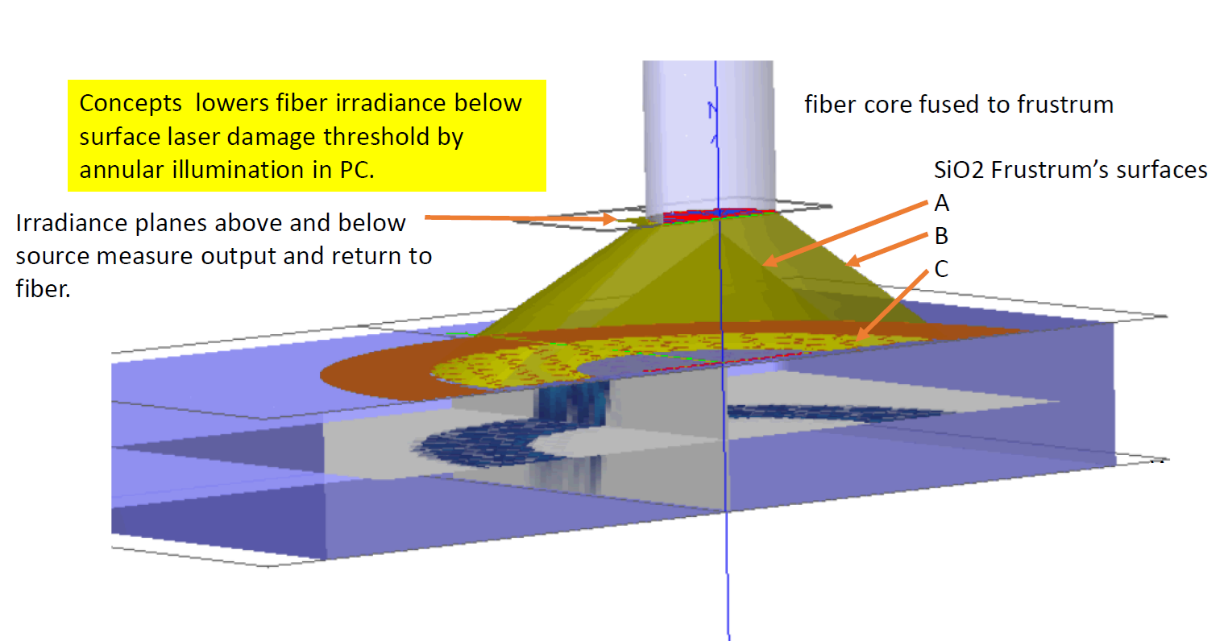Photoconductive semiconductor switches (PCSS) are needed for high-power microwave (HPM) applications due to their fast switching and high-voltage handling capabilities. It consists of a wide bandgap material sandwiched between two electrodes, and a light source to control the flow of current between them. This invention is a design that maximizes the utilization of light in the PCSS.
The approach is to use a custom-designed frustrum and attach it to the optical fiber that connects to the PCSS. Light from the fiber enters the frustrum, spreads out, and enters the PCSS. Any unabsorbed light re-enters the frustrum and, because of its geometry, reflects back into the PCSS itself with only a negligible fraction escaping from the fiber. The shape of the novel frustrum is optimized to “frustrate” the light from going back to the fiber.
- Increases utilization of the light triggering the PCSS
- Enables uniform excitation of the bulk of the PCSS
- By spreading not only the light but also the heat, the frustrum’s novel design minimizes the damage to the PCSS
- Directed energy and effects testing
- Electronic warfare
- Long-range communication and radar
- Industrial microwave heating or curing
- Pulsed power and particle accelerators
Current stage of technology development: TRL 2 (Technology concept and/or application formulated)
LLNL has a patent on this invention.
U.S. Patent No. 11,555,965 Illumination Frustums for Photoconductive Switches published 1/17/2023


